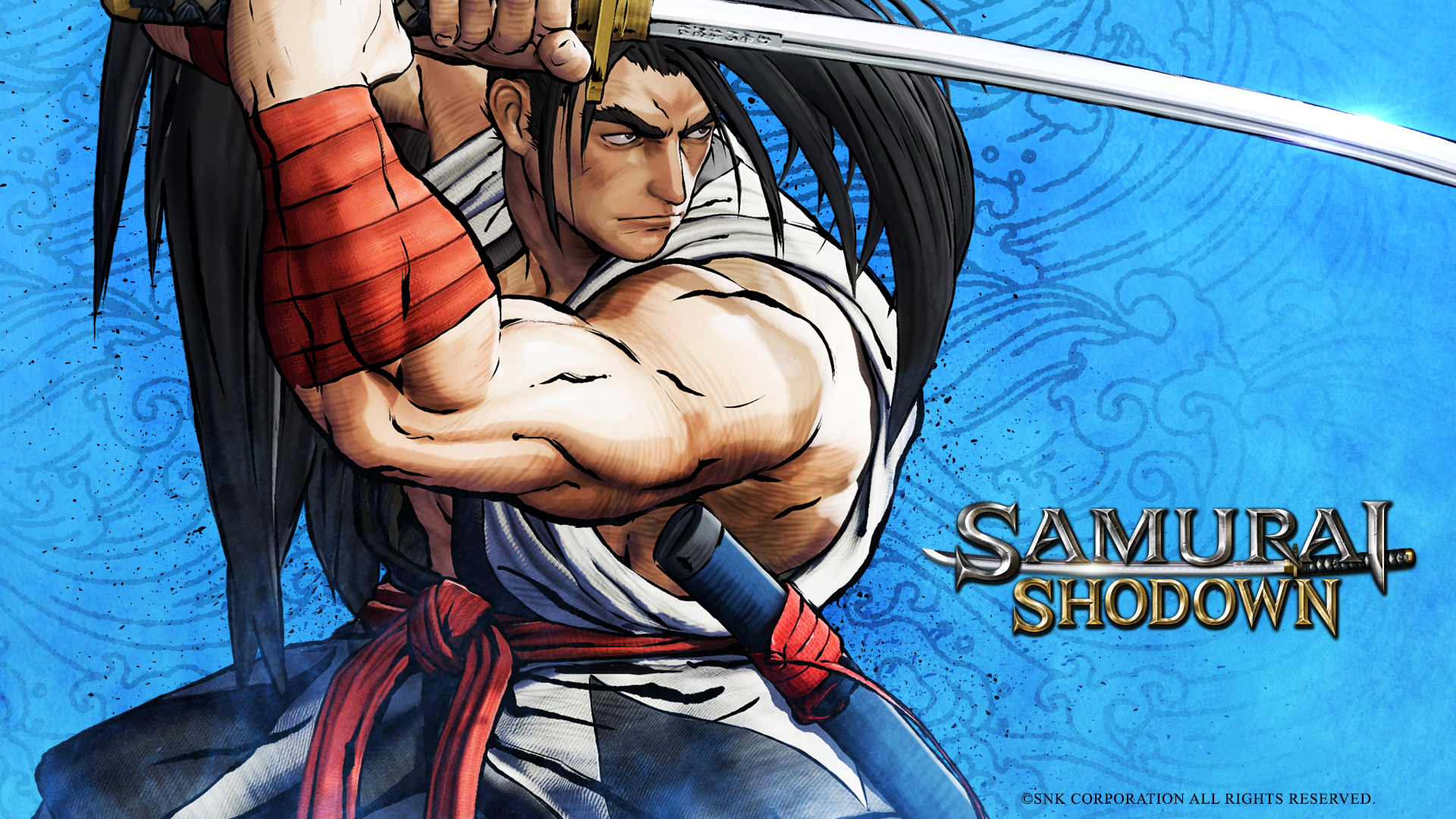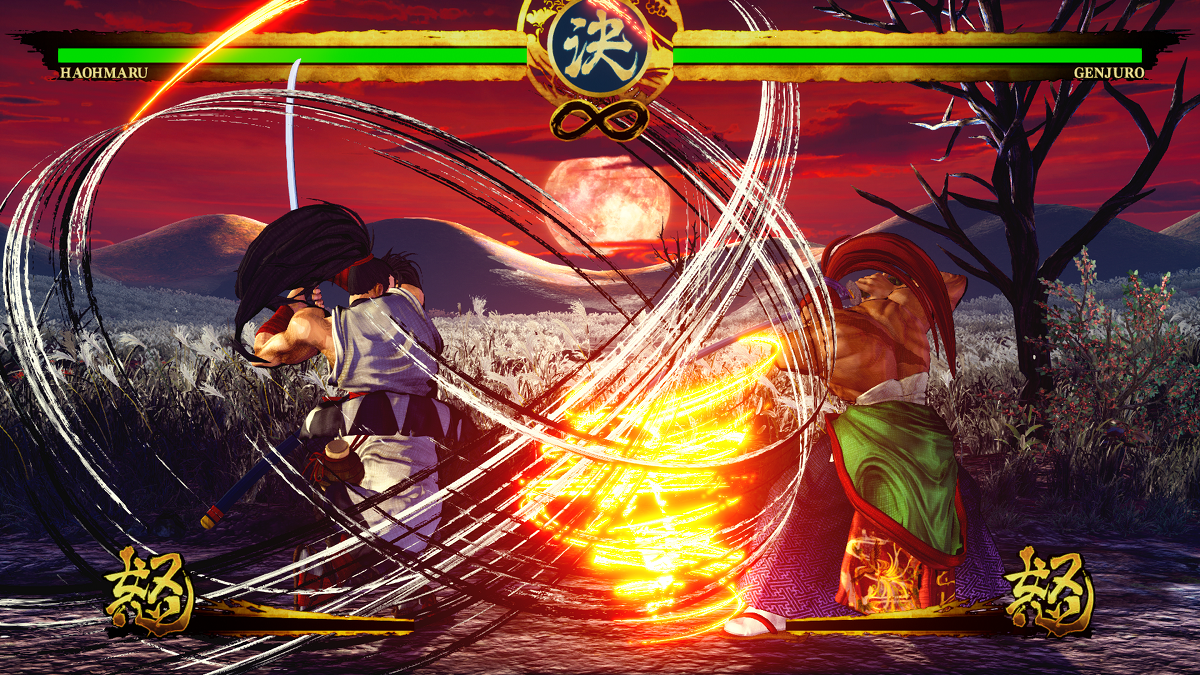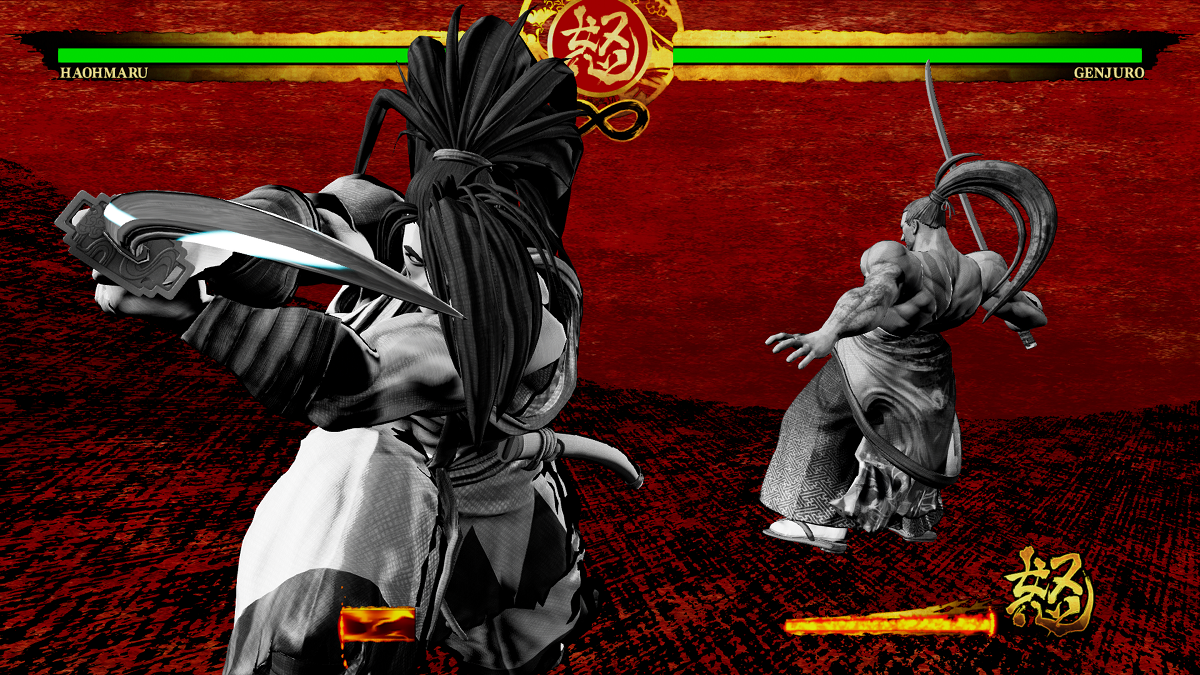I have played my fair share of fighting games in my life. Admittedly though, that “fair share” hardly deviates from the known quantities. I’m talking about the numerous Street Fighter, Mortal Kombat, and Tekken games that have graced our consoles for years. Sometimes I’ll get crazy and check out something like Guilty Gear Xrd Rev 2 (which I’m terrible at) or Killer Instinct (which isn’t that crazy) but I never really stick with them because they either have an incredibly high skill ceiling (see Guilty Gear Xrd Rev 2) or the competitive scene sort of fizzles out after a few years (see Killer Instinct).
At this year’s PAX East, I played the upcoming fighting game Samurai Shodown, the latest entry in the Samurai Shodown series. I had never played any of the numerous entries so I had zero expectations. I didn’t know how it played or if I would even enjoy it. I sat in a room lit solely by the television screen joined by game designer Joshua Weatherford, Producer Yauyuki Oda, and Director/Lead Artist Nobuyuki Kuroki. I was shown the ropes by Weatherford and then instantly lost. After a few matches though, not only did I improve, I would not have minded staying there playing Samurai Shodown for the duration of my time at PAX.
The first thing Weatherford mentioned about Samurai Shodown is that it is not a combo-driven fighter. It is all about punishing your opponent by creating windows of opportunity. Not that that isn’t true of most fighting games, but it is more so the case here. Any mistake made could mean the end of the round due to the punishing special moves each fighter has. It is the epitome of a risk/reward system that flaunts some of the tightest gameplay I have ever played in a fighting game.
Samurai Shodown controls similarly to other fighters. Playing on a PlayStation gamepad, X was kick, square was light attack, triangle was medium, and circle was heavy. The majority of my time, I played as Haohmaru, essentially the Ryu of the series. Wielding a katana, he seemed to be one of the fighters with a longer reach which fit my playstyle more than any of the other fighters who were unique in their own right. For example, the ninja Galford can command a wolf to initiate the fight while you stand back and wait to punish the opposition. The cast seems very diverse, catering to just about any playstyle.
[pullquote]"The cast seems very diverse, catering to just about any playstyle."[/pullquote]
Each fighter also has two special moves: one with a red background and the other with a yellow. Red background special moves are initiated by hitting the left trigger in which you enter a super state where your attacks do a bit more damage. When you press the left trigger again, in Haohmaru’s case, you will zip across the stage and initiate the special move that deals a ton of damage and is paired with a stylish cinematic.
The benefit is very apparent for the red background special moves. It’s doubly true if you initiate the move earlier than later as it will do more damage. However, these moves can be blocked or parried which can lead to some very sticky situations if you do not land the hit. This particular special move can only be used once per match, which is indicative of the aforementioned risk/reward system.
Yellow background special moves are initiated a bit differently but produce results that can be just as punishing. Pressing forward, quarter-circle, and the right trigger in succession will initiate the special move and also do tons of damage. There is enough time for your opponent to counter you which makes the move very risky to use. If you do land it, you will do a ton of damage. It is also important to note that yellow background special moves will not take any meter, so the real risk is leaving yourself open for your opponent to counter.
[pullquote]"Even a couple of days after playing it, Samurai Shodown is all I am thinking about."[/pullquote]
The skill ceiling for Samurai Shodown is pretty high, but that doesn’t mean it should steer new players away. In fact, I would say SNK’s latest is very approachable for someone new to the series. The lack of combos means players don’t have to memorize a slew of button combinations to be effective. Every character’s special moves are initiated the same way; it is knowing how to use that particular move effectively that requires knowing your main’s moves extensively. Even when I was getting pummeled by the low-level CPU, I wanted to jump back in and continue learning the intricacies of Samurai Shodown. Everything about it, from the stylized art to the tight gameplay, is brilliant.
Samurai Shodown surprised me in a way that no other game at PAX did. Mortal Kombat 11 was not only my most anticipated fighting game of the year, but one of my most anticipated games of any genre in 2019. SNK’s latest left a lasting impression on me that has now dethroned MK11. Even a couple of days after playing it, Samurai Shodown is all I am thinking about. Its defense-driven combat system and punishing special moves feel unique, setting itself apart from those known quantities. I am so excited for Samurai Shodown, now more than ever, and cannot wait to see true competitive play once the game releases later this year.



